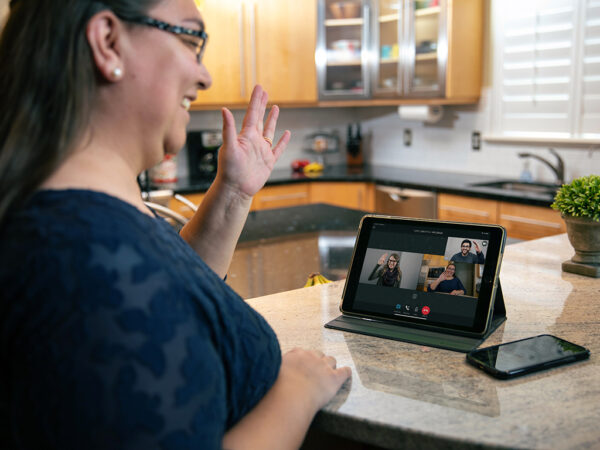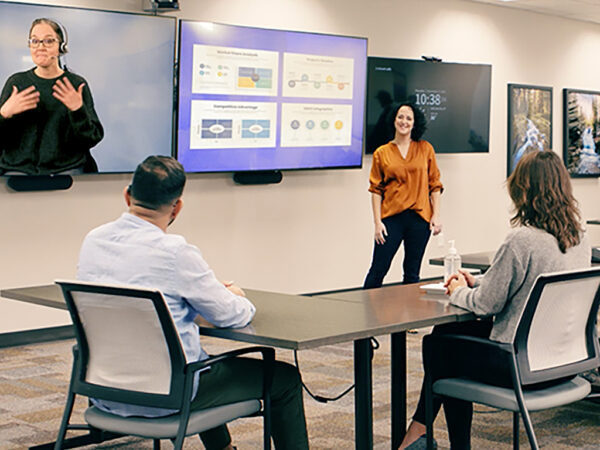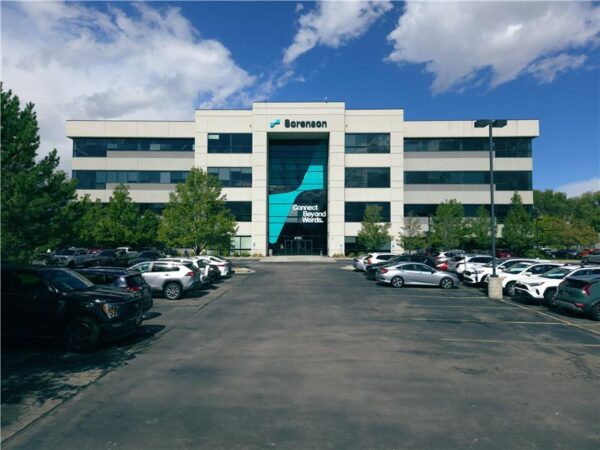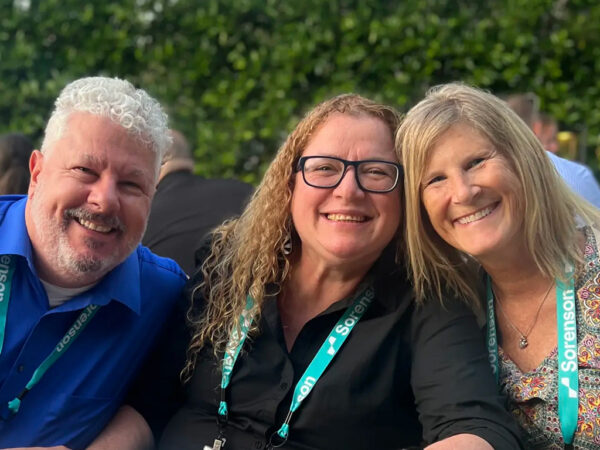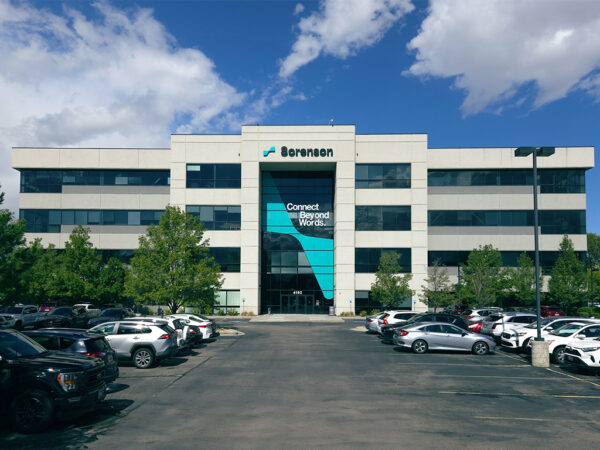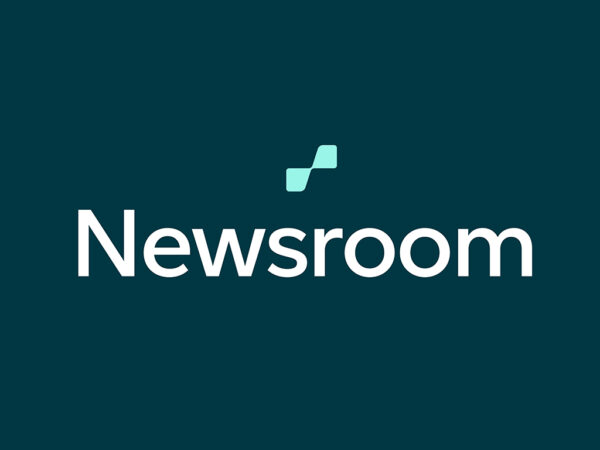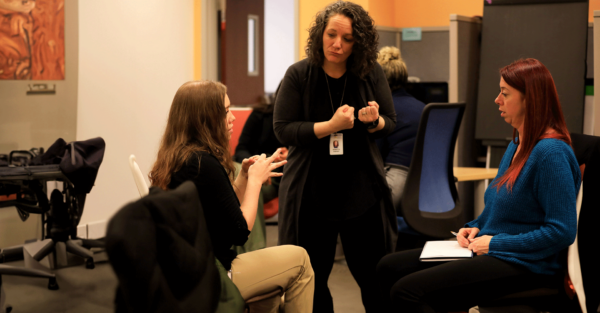How to Create an Accessible and Inclusive Work Environment: a Guide to Workplace Engagement
December 19, 2022

Creating an inclusive culture isn’t about checking boxes to cover different backgrounds and disabilities. It’s about broadening your company’s range of perspectives, experiences, and opinions. Diverse populations help you understand and respond better as a business. In fact, research shows that the relationship between variety in executive teams and the likelihood of financial outperformance has strengthened over time. More importantly, creating a culture of belonging demonstrates the important values that both current and prospective employees can identify with. Here’s how you can start cultivating an inclusive space at work.
Communicate company-wide about culture
To develop an inclusive workplace, your workforce needs to understand what that means. Rather than positioning an inclusive workforce as a challenge to meet, celebrate the perspective each person brings to your organization. Regularly communicate how everyone contributes to and benefits from different perspectives in the workplace.
Listen to underrepresented groups for an inclusive workplace
Surveys provide a safe way to gauge employee sentiments. However, consider taking that a step further and encourage Employee Resource Groups (ERGs). These groups are voluntary, employee-led outlets aiming to foster a sense of belonging at work. ERGs bring together employees who usually share a characteristic — such as gender, ethnicity, religious affiliation, lifestyle, or interest — with allies for personal or professional support.
Although ERGs are voluntary, employee-run organizations, they do need institutional support. Their creation requires buy-in from leaders at various levels. They are found in approximately 90% of Fortune 500 companies and address a range of employee concerns within an organization. They can help with:
- Assisting marginalized groups and remote workers to connect through a common cause or interest
- Facilitating conversations in a safe space where employees feel comfortable sharing experiences
- Addressing specific topics or challenges with leaders to keep them informed about what’s top of mind for the group members
- Improving physical work environments, like advocating for gender-neutral restrooms or physical, visual, or auditory accessibility in individual workspaces and communal areas
- Identifying and developing emerging talent that might otherwise go overlooked due to unconscious bias
While ERGs can unify and amplify underrepresented groups within your business, they also give leaders insight into their thoughts about an inclusive workplace. Including them in company decisions and hiring processes will reinforce inclusive culture at work.
Offer plenty of resources
 In addition to ERGs, there are multiple ways to engage employees in an inclusive workplace. For instance, your company newsletter can distribute DEIA educational. Additionally, your Employee Experience or HR team can host DEIA educational events or facilitate mentorship programs. Your company could also offer talent development programs for underrepresented employees or even individuals outside the company to cultivate diverse, emerging talent that may otherwise be difficult to reach. Think outside the box to promote diversity and inclusion in the workplace and in your community.
In addition to ERGs, there are multiple ways to engage employees in an inclusive workplace. For instance, your company newsletter can distribute DEIA educational. Additionally, your Employee Experience or HR team can host DEIA educational events or facilitate mentorship programs. Your company could also offer talent development programs for underrepresented employees or even individuals outside the company to cultivate diverse, emerging talent that may otherwise be difficult to reach. Think outside the box to promote diversity and inclusion in the workplace and in your community.Create inclusive applications and interviews
Did you know Black and most other minority students are less likely to graduate with a college degree than white students? According to an article from InStride, of those over the age of 25, 68% of white Americans meet common educational job requirements compared to 39% of Hispanic Americans and 55% of Black Americans. To address this disparity, you might consider whether a bachelor’s degree is essential to an open position on your team. Removing unnecessary degree requirements is one way you can open the door to more diverse applicants. Focusing on hard and soft skills instead of education will widen your pool of job candidates to those who have had disproportionate access and means for higher education.
Finding a broad variety of people to fill open roles demands job descriptions that invite all qualified job-seekers. As clearly as possible, define job roles, responsibilities, and key competencies. Then, get outside feedback, ideally from an underrepresented group, before you post (this is a wonderful time to consult your ERGs!). Others might notice company jargon or implicit bias that would limit a potential candidate’s understanding or interest in the job.
Moreover, hiding all personal information from applications in your screening — including name, schools dates, and locations — removes potential sources of bias for your talent acquisition team. Then, managers and other decision-makers can short-list candidates for interview based on skills and experience alone.
Overall, consider what the application and interview process looks like for candidates with varying perspectives. What are potential obstacles? What would make prospective employees feel a sense of belonging? Do they need any accommodations? For example, making online applications accessible to someone who is Blind or low vision demonstrates a commitment to encouraging them as a candidate. Before interviews, remember to be open and ask about a candidate’s needs.
Another example of inclusive hiring practices would be asking about communication preferences and arranging for an interpreter for a Deaf candidate’s interview. These accommodations create an application and interview environment that allows candidates to present their best selves.
Get creative with diversity and inclusion in talent searches
Instead of giving up if it seems that people from diverse groups don’t apply to open roles, focus on how you might reach out to diverse populations more effectively. Besides recruitment websites, networking sites, and traditional publications, look at new and targeted ways you can advertise job openings.
- Consider options like social media channels or specialty job fairs and boot camps.
- Try networking at various schools and universities or membership associations.
- Even stepping out into new geographical locations can yield a more diverse candidate crowd.
Foster an inclusive workplace through internal processes
For both new hires and long-time employees, it’s important to have a clear channel for expressing issues, suggestions, and requests. As we mentioned above, ERGs are an excellent resource for communicating employee needs, especially at a group level. However, for individual needs, each employee should know who they can go to for guidance and support.If an employee needs a wheelchair ramp to access the building, where do they take that request? If captioning would help a hard-of-hearing employee in meetings, who can they ask to provide that service? If a team member experiences a micro-aggression, do they speak to their direct supervisor or HR first? It can already be hard for an individual to speak up about their needs. It is even more difficult when they don’t know who to go to. Outlining a chain of communication during onboarding, in your employee handbook, and on your company intranet will empower your team and make them feel supported.
Getting more inclusive at work
Creating an inclusive workplace isn’t a one-person initiative. Remember to involve others and get diverse perspectives. Look beyond Human Resources. Convening with people from different departments brings more ideas and greater insight as a result. As your business grows and develops, keep accessibility at the forefront of decisions. Sorenson has a variety of resources to help you make your workplace more inclusive to Deaf and hard-of-hearing individuals.







